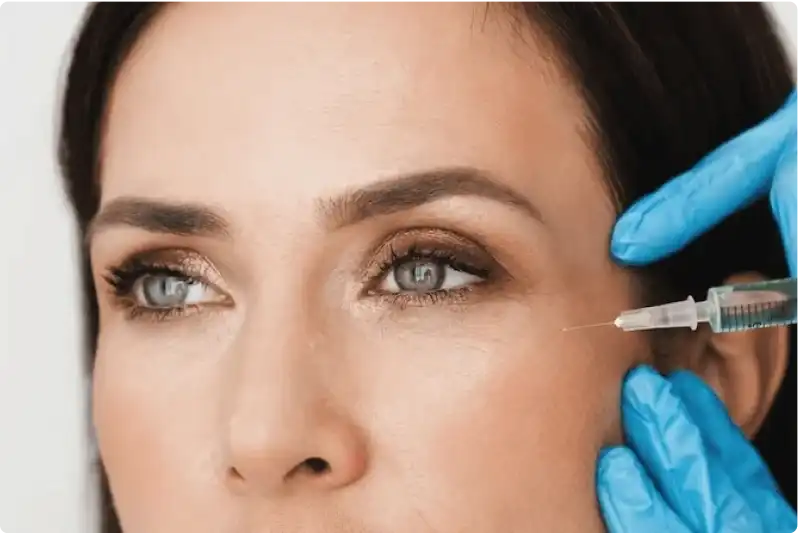Only for Licensed Professionals
Only for Licensed Professionals

Signs Nexplanon Is Wearing Off
David Fuller
Last Updated On: September 16, 2025
Long-acting reversible contraceptives (LARCs)—including implants and intrauterine devices (IUDs)—are among the most trusted birth control methods because they provide years of protection with little upkeep. Each option, however, has a recommended timeline for replacement to ensure ongoing reliability and peace of mind.
One popular choice is Nexplanon, a small implant placed under the skin of the upper arm. By releasing a steady dose of etonogestrel, it prevents pregnancy for up to three years. While studies suggest it may last longer for some women, following FDA-approved guidelines is the safest approach.
As the three-year mark approaches, some people begin to wonder if Nexplanon is “wearing off.” Shifts in bleeding patterns, the return of premenstrual symptoms, or other changes can cause uncertainty. This article explores what these signs may mean, how to distinguish typical side effects from actual expiration, and steps to maintain reliable protection.
Key Takeaways
- Nexplanon is FDA-approved for 3 years of use; replacement or removal is required afterward to maintain reliable pregnancy protection.
- Studies suggest it may remain effective up to 4–5 years, but this is considered off-label in the U.S. and should be discussed with a healthcare provider.
- Symptoms like irregular bleeding, mood changes, or skin changes are common with implants and do not prove that effectiveness is declining.
- Routine testing is not needed; pregnancy tests or imaging are only used if pregnancy is suspected or if the implant cannot be located.
- If the implant is overdue, use backup contraception immediately and seek replacement or removal as soon as possible.
About: Operating since 2016, Med Supply Solutions is known for being one of the industry’s top and trusted suppliers of cosmetic and viscosupplementation products. If you’re looking to buy Nexplanon online, contact our sales department for more information.

Typical Timeline for Nexplanon Effectiveness Decline
Nexplanon provides highly reliable pregnancy prevention by steadily releasing the hormone etonogestrel. According to FDA guidelines, it is officially approved for three years of continuous use. Beyond this point, replacement or removal is recommended to maintain full protection.
Research has shown that hormone levels decline slowly over time, and several studies suggest Nexplanon may remain effective for up to four or even five years in many users. However, using the implant for more than three years is considered off-label in the U.S., and decisions about extended use should be made with a healthcare provider through shared decision-making.
The safest approach is to follow approved guidelines and plan for replacement by the three-year mark. This avoids uncertainty, prevents gaps in protection, and helps patients feel confident about how long Nexplanon lasts.
Physical Symptoms That May Indicate Nexplanon Is Wearing Off

Unlike some medical devices for contraception, Nexplanon does not signal when it is expiring. Some women may notice changes in bleeding, mood, or other physical symptoms over time. However, it’s important to clarify that these changes are not reliable signs that the implant is losing effectiveness. Such symptoms are common at any point during implant use and often reflect the body’s normal response to progestin rather than a decline in protection.
Examples of changes patients sometimes report include:
- Irregular bleeding patterns, such as spotting, heavier flows, or unexpected cycles.
- PMS-like symptoms, including mood swings, cramps, or breast tenderness.
- Skin changes or mild shifts in weight.
- Fertility-related signs, like mid-cycle discharge, which are not proof of ovulation.
These experiences may prompt concern, but they should be viewed as reasons to check in with a provider rather than proof that the implant has “worn off.” The calendar remains the most reliable indicator—if it has been three years since insertion, it’s time to consider replacement.
When to Test for Reduced Effectiveness of Nexplanon

Routine testing is not required to confirm Nexplanon’s effectiveness. In most cases, the timeline since insertion is the only indicator that matters. However, certain evaluations may be appropriate if specific concerns arise:
- Pregnancy Testing: Recommended if pregnancy symptoms appear, such as nausea, breast tenderness, or unexplained fatigue.
- Imaging (Ultrasound or X-ray): Reserved for cases where the implant is not palpable, insertion was uncertain, or migration is suspected. This is not needed for routine “function checks.”
- Hormone Level Testing: Not recommended, as it rarely provides useful clinical information about implant effectiveness.
In general, testing is used to investigate specific concerns rather than to monitor routine use. For most patients, keeping track of when the implant was placed is the most reliable guide.
Counseling Patients on What to Do If Nexplanon Wears Off
Patient education is central to safe contraceptive use. When Nexplanon reaches its three-year mark, or if a patient is overdue for replacement, clear guidance helps prevent gaps in coverage. Providers should discuss the following points:
- Timely replacement: Plan for removal or reinsertion before the three-year mark.
- If overdue: Use backup contraception immediately (such as condoms) and consider emergency contraception if unprotected sex occurred after expiration.
- Pregnancy goals: If planning to conceive, removal rather than replacement may be the best step.
- Alternative options: Some patients may benefit from switching to longer-lasting methods, like copper or hormonal IUDs, especially if they want extended coverage.
By addressing these scenarios proactively, providers reduce uncertainty, reassure patients, and ensure continuity of care.
Conclusion
The most reliable way to know if Nexplanon is “wearing off” is not by watching for symptoms but by tracking time since insertion. The implant is FDA-approved for three years, though evidence shows it may work longer in some women. Use beyond three years is off-label in the U.S. and should only be considered through shared decision-making with a healthcare provider.
Recognizing the importance of the replacement timeline, scheduling follow-ups in advance, and maintaining open communication helps patients avoid gaps in protection. Whether continuing with Nexplanon or exploring alternatives like IUDs, planning ahead ensures peace of mind and reliable contraceptive coverage.
FAQs
1. What are the earliest signs that Nexplanon is wearing off?
There are no reliable physical signs that Nexplanon has lost effectiveness. Symptoms like irregular bleeding or mood changes are common at any time during use. The most dependable indicator is reaching the three-year mark.
2. Can Nexplanon still work after 3 years?
Yes. Studies suggest it may remain effective up to 4–5 years in many users. However, in the U.S., replacement at 3 years is recommended, and longer use is considered off-label.
3. Do I need tests to confirm Nexplanon is expiring?
Usually no. Routine hormone level checks or imaging are not needed. Testing is appropriate only if pregnancy is suspected or if the implant is not palpable.
4. What should I do if my Nexplanon has expired?
Arrange for replacement or removal as soon as possible. Use backup contraception until the new implant is in place, and consider emergency contraception if unprotected sex occurred after expiration.
References
Family Planning NSW. Long-acting reversible contraception (LARC). Updated June 2023. https://www.fpnsw.org.au/factsheets/individuals/contraception/long-acting-reversible-contraception-larc
Cleveland Clinic. Long-acting reversible contraception (LARC). Updated August 4, 2023. https://my.clevelandclinic.org/health/treatments/23269-larc
Products
Cart
Log In
Newsletter
Subscribe for exclusive offers and updates on new arrivals
Share feedback at:
Working Hours
MON - SUN 9AM to 6PM EST
The Most Popular Brands
Med Supply Solutions
Support
Secure checkout is guaranteed with full adherence to PCI DSS payment standards.
Products listed here are guaranteed authentic and manufacturer-sourced.
Pay easily with trusted providers


*Google and Apple Pay are currently only available via a direct link provided by your account manager.
Copyright 2025. Med Supply Solutions